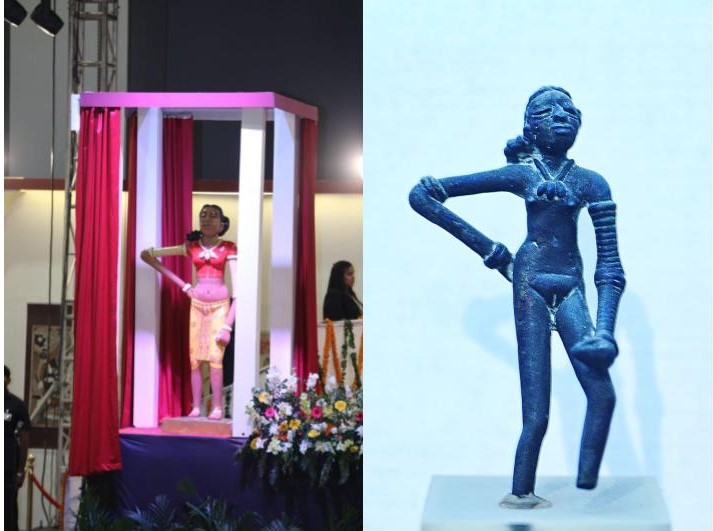Krispin Joseph PX
What is the most unique artefact we got from the great Indus Valley Civilization? Many things have been excavated from Harappa and Mohenjo Daro, and most of the artefacts are monuments of our grand civilisation and history. Dancing Girl is a unique artefact from the Indus Valley, though the feminine element of Indian Culture is prominently marked in these artefacts. These 10.5 cm tall artefacts is a prehistoric bronze sculpture made from a lost-wax casting technique, depicting nude women standing confidently with stylised ornaments and in a naturalistic pose.
Some archaeologists called this ‘Dancing Girl’ in a perfect gesture and moment, and she perfectly placed herself into that existing world. At the same time, observations about the girl’s motion tell the association with religious ceremonies associated with death. The goat seal got it from the Indus shows the girls standing in the front as if they had performed a ritual dance. The dancing girl statue may not say anything in particular, but the other elements from the site tell more about the relevance and significance of this statue. The burial spots of Tamil Nadu show the woman in the same gesture, keeping her left hand on her hips. It reveals that the dancing girl gesture is associated with burial-related ceremonies and rituals. That element is spread out in the southern part of India after the decline of the Indus Valley.
Assumptions about the Dancing Girl led us to many theories on lifestyle and women’s life in our ancient civilisation and the presence of women in social-public life. How can we understand Dancing Girl in a historical context? The style and form of the Dancing Girl statue reveal the connection between East and West. This statue links many historical incidents and transactions between East and West.
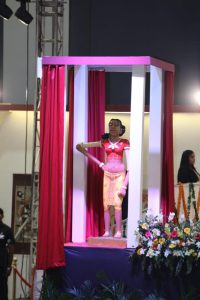
Credit: Twitter
The Dancing Girl is so important now because of the statue unveiled by Prime Minister Narendra Modi at International Museum Expo 2023 at Pragati Maidan last day. Prime Minister unveiled a five-foot toy in Channapatna Style inspired by the Bronze Dancing Girl of Indus Valley at this event. The stylised and contemporaries’ life-size version of Dancing Girl is an official Mascot of the International Museum Expo 2023. The Mascot is interpreted as a modern-day “Dwarpaal” or the “door-guardian” that directs the audience into the International Museum Expo 2023 affair.
After a long time of interactions and engagement with our great history and the artefacts of that history, our folk culture starts to use the historical objects to reinterpret. The statue unveiled at International Museum Expo is a New Generation interpretation of our great history and culture.
We need to know the Channapatna toys to understand the modern folk element of this unveiled Dancing Girl statue. Channapatna is the city of Ramanagara district in Karnataka state, India, and this place is known for its hand-crafted wooden toys. The Channapatna toys made by the artisans of the Channapatna are famously welcomed worldwide, and GI (geographical indication) tagged, a trademark given by WTO. Channapatna toys have become famous for the last 200 years, and toys are made from local wood, painted with natural dyes, and finished with lacquer polish. Channapatna toy makers have a relationship with the great ruler of Tipu Sultan. Tipu Sultan’s intention to create something new led from the blend of Persian and Channapatna artisans. In modern times, Channapatna artisans got Japanese toy-making techniques to improve productivity and reduce effort. Natural materials and colouring styles used for Channapatna toys, these toys and dolls engage the traditional life of the Indian sub-continent in various routes.
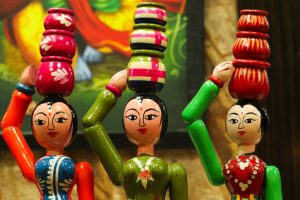
Credit: travel. earth
Channapatna Toys is now gaining the world market from a small village muddy road. Channapatna toys are made entirely of natural materials and procure- seasoning, cutting the wood, pruning and carving, and colouring are done traditionally.
Channapatna Toys is a rural folk tradition of toy making, and now that style gets international recognition at International Museum Expo 23 through Dancing Girl reproduction. When the Dancing Girl statue was unveiled on that occasion, India’s two distinct techniques and approaches met together. Dancing Girl statue often travels to meet Channaptna Toy artisans from one part of the country to another to get a changeover. Channapatna toy making is celebrated likewise with Dancing Girl reproduction of Channapatna style, and the unveils of a ‘life size’ statue brings new dimensions in the discourse of tradition and culture.
Toy making is a craft practice managed by Channapatna village people in Karnataka. They already have a rich history and tradition associated with Tipu Sultan and Japanese toy-making techniques. They reached the soul of Indian history and culture by remaking the Dancing Girl statue at Museum Expo 23. The last decades have affected these toymakers a lot because of the drastic fall in the numbers of divisions and people entangled in this industry, both manually and mechanically; the sector has withstood threats, including poor replicas from China and plastic toys. Toymakers from a village need help managing their presence in the local and world market.
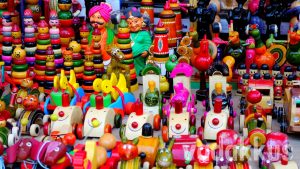
When Prime Minister of India, Narendra Modi, unveiled the Dancing Girl at the international expo, the Channapatna toymakers got real honour and attention worldwide. The Dancing Girl from Indus Valley is a perfect instrument for rewarming of craftsman’s life in contemporary society. The materials we got from Indus Valley are ideal for telling our outstanding performance of craftmanship. Somehow this craftmanship exists in our community, and some of them gain recognition and livelihood, but many need to establish themselves long-term.
This year International Museum Expo will remember forever because of the ‘Dancing Girl’ reinterpretation of the Channapatna Style. This reinterpretation of the Dancing Girl gives a presence in contemporary art discourse and, for Channapatna toymakers, gets international attention.
The Indus Valley Dancing Girl is nude and not bothered by the nudity. But the reinterpreted Dancing Girl has dressed up in a red blouse and a yellow skirt. Why did this also a matter of discussion?
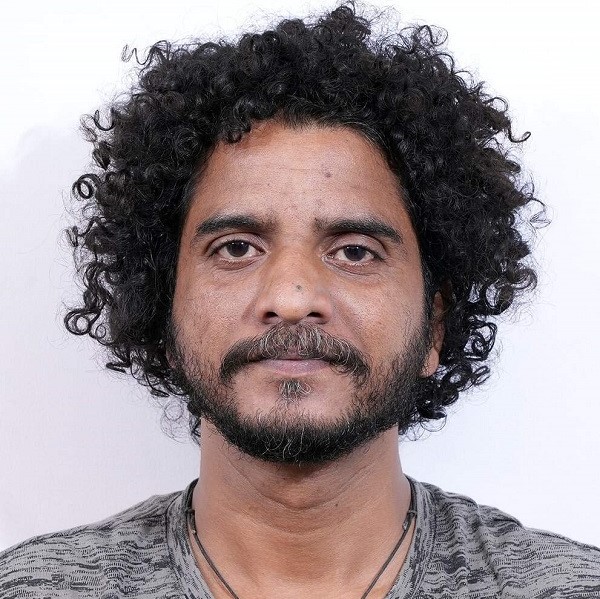
Krispin Joseph PX, a poet and journalist, completed an MFA in art history and visual studies at the University of Hyderabad.

